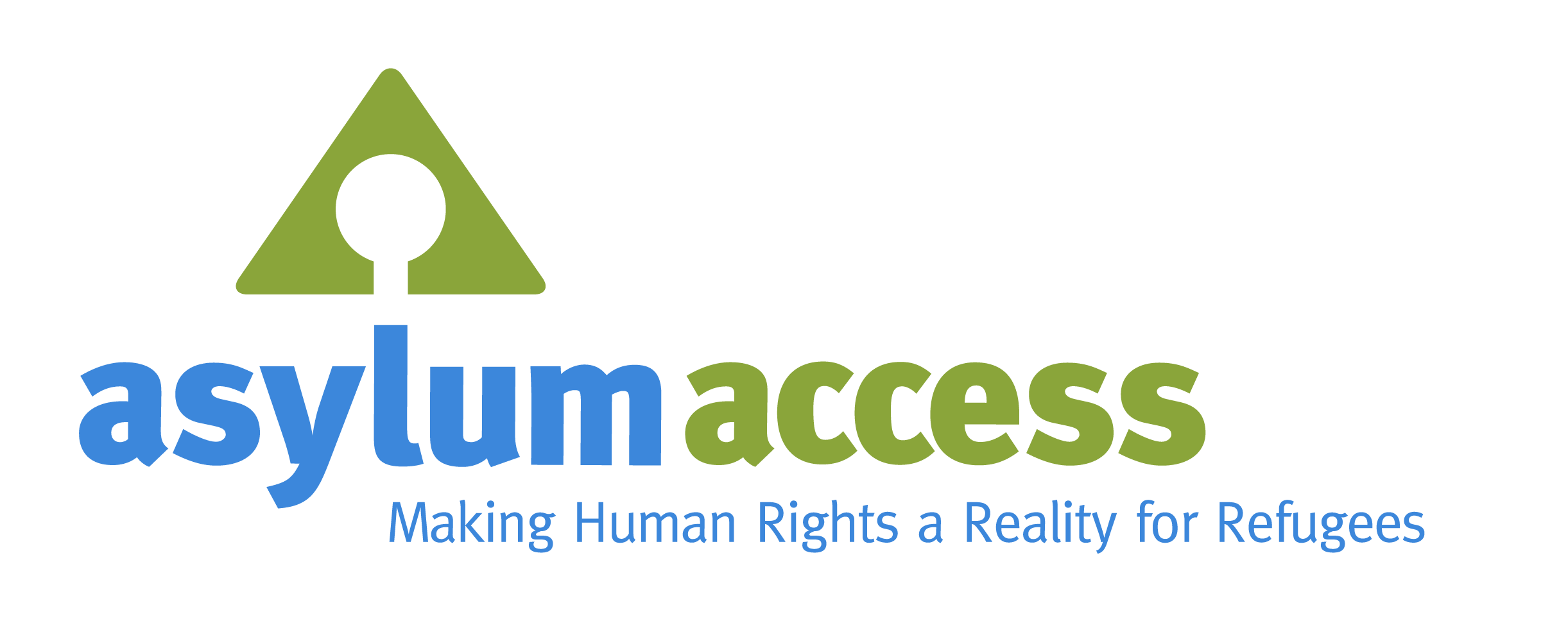Current “protection” efforts are failing refugees. In our latest Position Paper, The Only Real Protection is Local, endorsed by 33 international, local and refugee-led organizations across the globe, we argue that the dominant modes of protection intervention do little to address the systemic lack of protection in the domestic national landscapes in which refugees live. We believe that in order to achieve true protection for forcibly displaced communities, local ecosystems require funding and partnerships that support concerted efforts of locally-devised, refugee-centered advocacy to bring about rights in law and in practice.
(Re)defining Protection
Protection activities often make up a significant part of the programming carried out by UNHCR and international NGOs for the intended benefit of refugees and other forcibly displaced communities. While these international efforts address important needs of refugee communities to a certain extent, they largely fall short of the sector’s own definition of protection.
Between 1996 and 2000, the International Committee of the Red Cross (ICRC) convened 50 human rights and humanitarian NGOs for a series of workshops on protection, which included creating a common definition. For the group, protection encompasses “all activities, aimed at obtaining full respect for the rights of the individual in accordance with the letter and the spirit of the relevant bodies of law (i.e. human rights, humanitarian law and refugee law). ”
Although this definition is firmly centered on rights, many protection programs from international NGOs and UN agencies since then – and those most likely to receive the majority of protection funding – have focused on the prevention of harm. This may look like efforts to ensure that environments are physically ‘safe’ to provide humanitarian aid, sexual violence prevention programming, or accompaniment for bureaucratic procedures. While important, these efforts are not aimed towards achieving the ‘full respect for the rights of the individual’ as described in the original definition of protection.
This means that despite decades of funding into protection programs, many people are still forcibly displaced into environments where they are unprotected. Their lack of recognition in local law means that they cannot walk down the street without fear of arbitrary arrest. Likewise, they cannot go to the authorities if they have been a victim of a crime. They often cannot work legally, which means they accept work in exploitative situations that drive down wages and working conditions for everyone.
The Case for Localized Protection
In line with the original definition of protection, Asylum Access defines localized protection as “the experience of enjoying rights in practice throughout all aspects of daily life.” The Only Real Protection is Local argues that re-orienting protection efforts towards localized protection is the primary way to achieve protection as defined by the human rights and humanitarian sector. Localized protection is not a new definition of protection; rather, it simply acknowledges that changes must happen at national and local levels and led by those embedded in the community, in order for protection to be realized.
Specifically, localized protection can only be experienced when:
- There are domestic laws in place that protect the rights of refugees in all interactions, whether that be at work, in school, in the street or at home.
- There are accountability and enforcement mechanisms so that those laws are put into practice.
- Refugee communities, including refugee-led organizations, have the power, positioning, and safety to participate equitably in shaping those laws and accountability mechanisms.
This rights-based approach to protection for forcibly displaced people has been a key part of our approach since we were founded. We have seen first-hand the differences in outcomes in terms of autonomy, safety, and well-being for refugees between more legally inclusive countries like Mexico and legally exclusive countries like Thailand and Malaysia. We have also seen through the efforts of our national organizations and many partner NGOs and RLOs that a concerted, long-term, locally-devised advocacy strategy led by local advocates and refugee communities can successfully amplify the rights that forcibly displaced people can enjoy in policy and in practice.
Call to Action
Many organizations are already pursuing localized protection – largely locally- and refugee-led – but they are rarely resourced for the type of coherent, long-term strategies that can achieve systemic change. To achieve greater long-term protection outcomes, donors and international actors in our sector need to use their position, resources and influence to promote a shift toward localized protection. Donors can do this by proactively and deliberately funding local actors, especially RLOs, that are well positioned to effect systemic change within refugee-hosting countries through credible theory and locally-devised strategies. INGOs can also support local protection efforts by building equitable partnerships with local rights-based NGOs that de-center themselves, rectify power imbalances and ensure local NGO and RLO partners are directly resourced and supported to lead on local protection activities.
“So many rights-based local NGOs and RLOs all over the world are making significant, hard-fought policy progress in their own contexts – some amidst very restrictive and challenging political environments with too little funding and recognition. These are often the same contexts where INGOs and UN agencies are funded to do “protection” work, when they are simply not well-suited to lead the kind of systemic changes needed in local legal and policy environments. This funding and power dynamic has to be reversed in favor of local protection actors, especially RLOs” says Deepa Nambiar, Asylum Access Director of Partnerships.
For our sector to achieve real protection for forcibly displaced people, localized protection efforts and actors must be prioritized and funded. Together, we can build a future where anyone forced to flee from danger can fully harness their rights to rebuild their lives.
To learn more about localized protection and how you can support localized protection efforts, read our Position Paper, The Only Real Protection is Local. For any questions or potential collaboration on localized protection projects, feel free to contact Deepa Nambiar.

